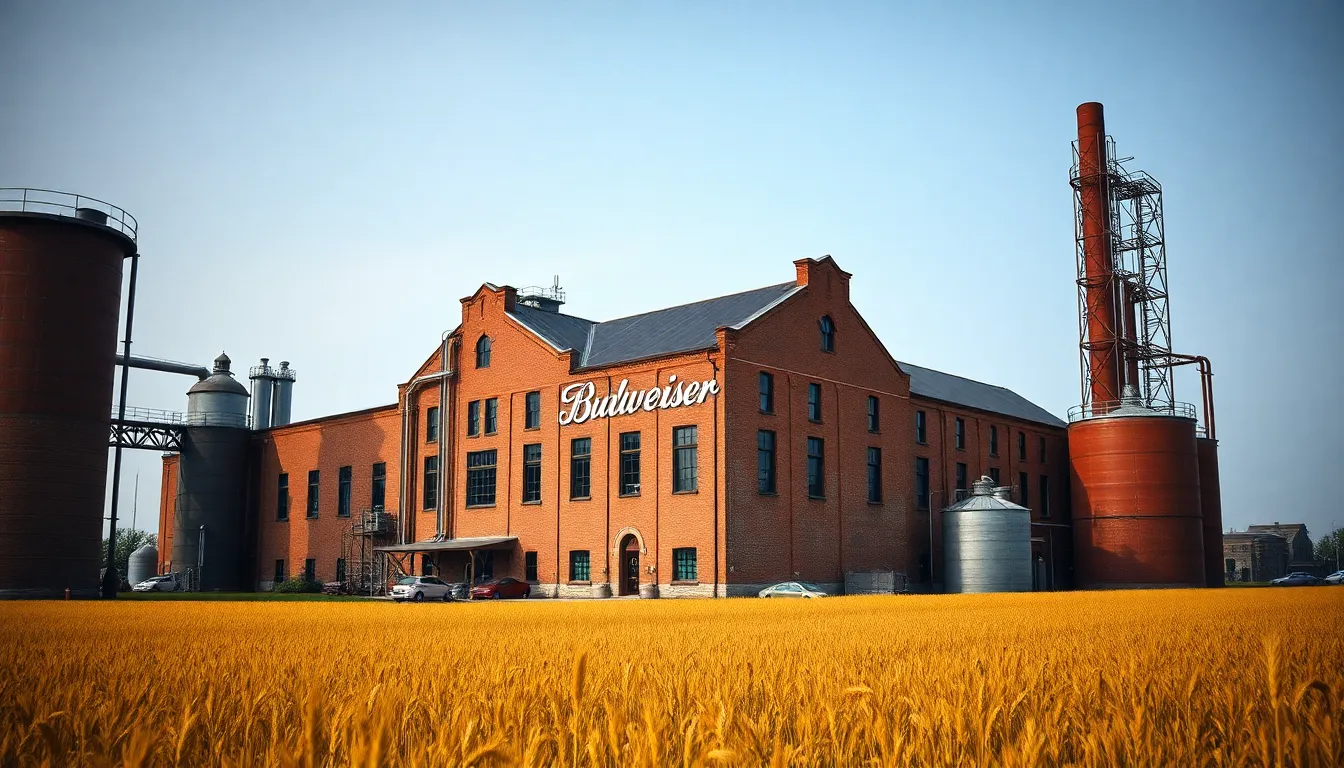When it comes to American beer, Budweiser often steals the spotlight. Known as the “King of Beers,” it’s a staple at barbecues, tailgates, and those moments when someone realizes they forgot to bring a drink. But what exactly is Budweiser? Is it a light lager or a heavy-hitting brew?
Table of Contents
ToggleOverview of Budweiser
Budweiser is an American-style lager produced by Anheuser-Busch. Known as the “King of Beers,” Budweiser contains 5% alcohol by volume and displays a crisp, clean profile. Created in 1876, it quickly gained prominence both in the United States and internationally.
The beer features a rich golden color with a bright white head. Aroma characteristics include mild hops, sweet malt, and a touch of corn. Flavor profiles are balanced, showcasing subtle bitterness alongside sweet malt notes. This combination makes Budweiser immensely popular at gatherings.
A light to medium body characterizes Budweiser, allowing for easy drinking. Its carbonation level contributes to a refreshing experience, making this beer a staple at social events like barbecues and tailgates. Budweiser pairs well with a variety of foods. It complements burgers, chicken wings, and pizza effectively.
Budweiser’s brewing process includes a commitment to quality ingredients. Using a blend of barley malt, rice, and hops enhances its distinct flavor. Quality control measures ensure consistency in taste, making Budweiser a reliable choice among beer drinkers.
Consumers appreciate Budweiser for its approachable taste and availability. Retailers often stock it in various package sizes, including cans and bottles. Widely recognized branding helps reinforce its status as a leading choice in the beer market.
Budweiser represents a well-crafted lager with broad appeal, characterized by its flavor profile, quality ingredients, and popularity at various social gatherings. This beer solidifies its position as a classic choice for beer enthusiasts.
History of Budweiser

Budweiser’s history reflects its journey from a local beer to an international icon. Founded in 1876, it emerged from the vision of Adolphus Busch and his brewing team at Anheuser-Busch.
Founding and Early Years
Adolphus Busch arrived in the United States from Germany in 1857. He partnered with Eberhard Anheuser, creating a successful brewing company. The introduction of Budweiser aimed to capture a distinct lager style that appealed to American tastes. Its original recipe featured a blend of barley malt and rice. The beer quickly gained popularity, receiving accolades from various fairs and exhibitions. By the early 1900s, Budweiser established itself as one of the leading beers in the country.
Evolution of the Brand
The evolution of Budweiser’s brand began during Prohibition in the 1920s when Anheuser-Busch diversified into non-alcoholic products. In 1933, with the repeal of Prohibition, Budweiser re-entered the market stronger than ever. Strong marketing strategies highlighted its crisp taste and quality ingredients. The brand embraced sponsorships and advertising campaigns. By the late 20th century, iconic advertisements contributed to its cultural presence. Over time, Budweiser expanded its product line while maintaining its classic lager. Today, it stands as a testament to brewing heritage and innovation, continuing to resonate with beer enthusiasts globally.
Characteristics of Budweiser
Budweiser showcases a well-defined set of characteristics that contribute to its popularity. The beer’s appeal lies in its flavor, alcohol content, and overall experience.
Flavor Profile
Budweiser offers a balanced taste, featuring a crisp, clean sensation. Mild hops create a subtle aroma, complemented by sweet malt notes. A hint of corn adds an interesting twist to the profile. Its light to medium body contributes to an easy drinking experience. The finish exhibits gentle bitterness, enhancing the smoothness overall. Food pairings enhance Budweiser’s versatility, making it an excellent match for burgers, chicken wings, and pizzas.
Alcohol Content and Types
With an alcohol by volume (ABV) of 5%, Budweiser aligns with most traditional lagers. This moderate ABV makes it accessible for various occasions. The beer primarily stands as an American-style lager. While Budweiser is the flagship product, the brand also offers variations like Bud Light and Budweiser Zero. These innovations cater to different consumer preferences, while maintaining the classic lager’s signature style.
Types of Budweiser
Budweiser offers a variety of beer types that cater to diverse palates. Each type represents a unique twist on the classic lager profile.
Original Budweiser
Original Budweiser stands as the flagship product. This American-style lager maintains a rich golden hue, crisp and refreshing notes, and a balanced flavor profile. It contains 5% alcohol by volume, with mild hops and sweet malt flavors complemented by a subtle corn note. Consistent quality stems from the use of barley malt, rice, and hops during brewing. Its light to medium body promotes easy drinking, making it popular at social gatherings.
Bud Light
Bud Light serves as a lighter alternative within the Budweiser family. This reduced-calorie option remains a favorite among those seeking a refreshing beer without the full-body experience of its predecessor. With an alcohol content of 4.2% by volume, Bud Light maintains the crispness characteristic of the brand while being less filling. Its flavor leans toward subtle malt sweetness and light hops, ensuring a smooth drinking experience. This option pairs well with casual meals and outdoor activities.
Specialty Brews
Specialty brews extend Budweiser’s appeal through unique flavor profiles. These variations, such as Budweiser Reserve and Budweiser Copper Lager, offer distinct tastes while retaining the classic lager foundation. Budweiser Reserve showcases a malty sweetness and rich flavor, resulting from aging on beechwood. Meanwhile, Budweiser Copper Lager provides a deeper amber color and caramel notes. These limited-edition options attract both traditional and adventurous beer drinkers, enhancing the brand’s reputation for innovation.
Popularity and Market Presence
Budweiser’s strong popularity reflects its status as a staple in the beer market. Its consistent quality and wide availability contribute to its market presence.
Sales Figures and Rankings
Budweiser frequently ranks among the top-selling beers in the United States. As of 2022, it consistently falls within the top five of beer sales, with annual sales reaching approximately 10 million barrels. Strong brand loyalty among consumers ensures its position as a preferred choice for many. The beer’s accessibility in various retail settings reinforces its high sales figures. Market analysis reveals Budweiser’s continued success, fueled by effective marketing campaigns and product diversification.
Cultural Impact
Budweiser’s influence extends beyond the beverage industry into American culture. Iconic advertisements during major events, such as the Super Bowl, showcase its enduring presence. The brand has become synonymous with social gatherings, often appearing at barbecues and tailgates. Sponsorships in sports, especially in the NFL, strengthen its cultural relevance. Aimed at connecting with consumers through memorable campaigns, Budweiser remains a beloved household name. Its cultural significance resonates with multiple generations, further embedding it in American tradition.
Budweiser stands as a symbol of American brewing excellence. Its rich history and commitment to quality have made it a beloved choice for beer drinkers across generations. With its balanced flavor profile and refreshing characteristics, Budweiser remains a versatile companion for a variety of occasions.
Whether enjoyed at a backyard barbecue or during a game day celebration, it continues to resonate with those seeking a classic lager experience. As the “King of Beers,” Budweiser not only holds a prominent place in the beer market but also in the hearts of many, ensuring its legacy endures for years to come.








